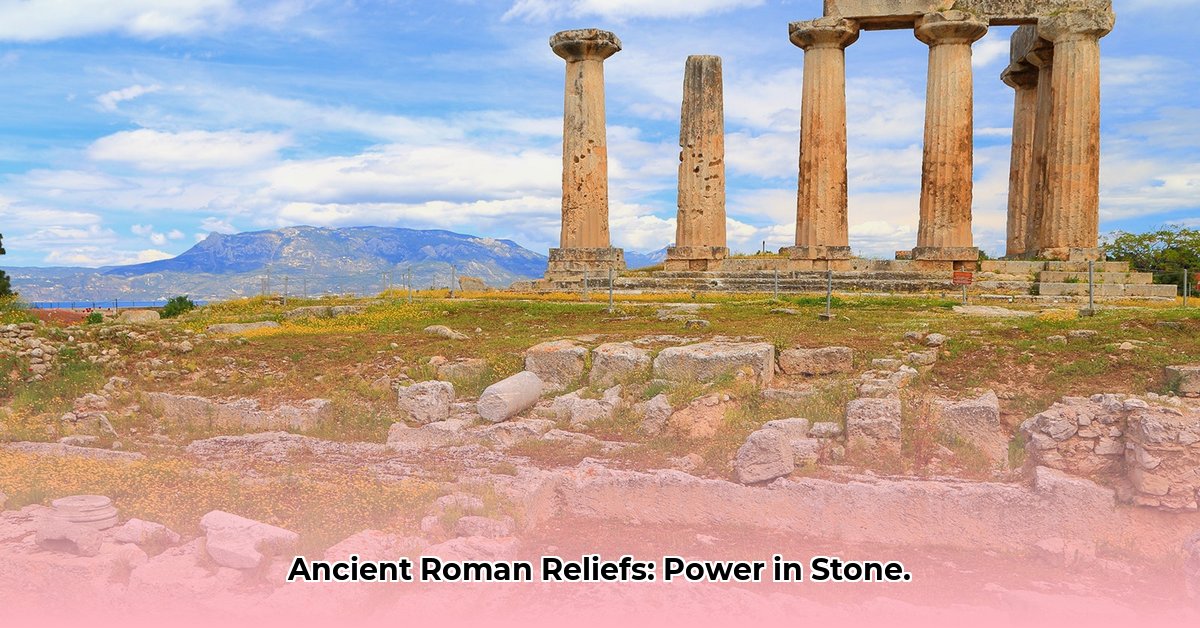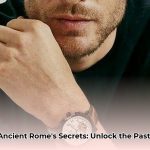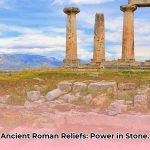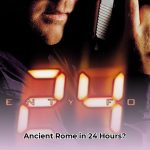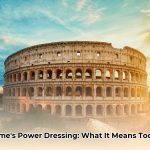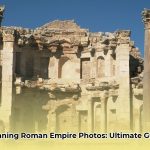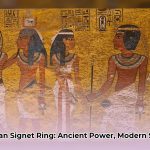Have you ever wondered how the ancient Romans immortalized their epic triumphs, their revered leaders, and the very fabric of their daily existence? They did so through a profound artistic medium: Roman relief sculpture. These intricate carvings, springing forth from surfaces, created dynamic, three-dimensional narratives that served not only as art but as powerful tools for communication and propaganda across their vast empire. This article delves into the fascinating world of Roman relief sculpture, exploring its foundational influences, its evolution from early realism to later stylized forms, its pivotal role in projecting imperial power, and the invaluable insights it continues to offer into Roman society. Prepare to discover how these stone chronicles captured the essence of Rome, and why their legacy remains profoundly relevant today. For more examples, see this article on Roman art.
Core Insights into Roman Relief Sculpture
- Purpose Beyond Art: Roman relief sculpture functioned as a potent vehicle for visual storytelling, historical record, and imperial propaganda, strategically employed by leaders to project authority and legitimacy.
- Emphasis on Realism and Specificity: Unlike the idealized forms often favored by the Greeks, Roman sculpture embraced a distinct verism, especially in portraiture and historical narratives, aiming to convey authentic individual character and verifiable events.
- Architectural Integration and Innovation: Roman relief carvings were fundamentally integrated into monumental architecture, from triumphal arches and commemorative columns to sarcophagi, demonstrating unique narrative styles and technical mastery.
- Enduring Legacy: Despite significant Greek artistic influence, Roman relief sculpture developed its own distinct identity, leaving an indelible mark on Western art history and continuing to provide unparalleled windows into Roman civilization.
The Foundations: Greek Roots and Roman Realism
How did such imposing and detailed Roman reliefs come into being? Their development is deeply rooted in an interplay of foreign influence and native innovation. Roman relief sculpture was never merely decorative; it was a potent communication vehicle, meticulously depicting everything from epic military campaigns to intimate religious ceremonies, providing a rich, visual chronicle of Roman life. The foundational influences on this distinct artistic tradition are complex, but we can trace significant origins back to Greek artistic traditions, which the Romans expertly adapted to their unique narrative voice.
Greek Artistry, Roman Pragmatism
The Greeks undeniably established a crucial artistic foundation. Their unparalleled mastery of the human form, sophisticated understanding of drapery, and inclination for visual storytelling in stone profoundly resonated with Roman sensibilities. Early Roman sculptures often mirrored Hellenistic styles, characterized by idealized figures and graceful compositions. This initial adoption provided a robust starting point, allowing Roman artists to learn and refine their techniques. Figures like Pasiteles and his school in Rome, composed largely of Greek sculptors, were instrumental in copying celebrated Greek originals, thus preserving many works that would otherwise be lost.
However, the Romans, renowned for their pragmatism and directness, expertly adapted the Greek model to serve their distinct needs. While Greek art frequently centered on mythological narratives and idealized forms, the Romans gravitated towards a pervasive realism, known as “verism,” particularly in portraiture. They sought to capture specific historical events, portray actual individuals with their characteristic features—wrinkles, scars, and individual quirks were seen not as imperfections but as marks of experience and character—and commemorate verifiable victories. This deliberate shift towards a detailed, factual realism marks a pivotal distinction in Roman artistic evolution, setting their works apart. This approach allowed for a more direct connection between the viewer and the depicted event or individual, making their visual narratives profoundly tangible. The Roman tradition of keeping wax death masks of deceased family members in the ancestral home, worn by mourners at funerals, is often cited as a key precursor to this emphasis on accurate, even unflattering, depictions in stone portraiture.
The Grand Canvas: Architecture as Imperial Proclamation
Roman leaders instinctively grasped the potency of imagery in shaping public perception. They understood that grand architecture could serve as a formidable medium for their messages, and ancient Roman relief sculpture became an integral part of this communication strategy. Iconic structures such as the Arch of Constantine, the Arch of Titus, and Trajan’s Column were not merely architectural marvels; they were meticulously designed monuments intended to disseminate the image of Roman strength and imperial authority across vast territories. These structures became monumental billboards of power.
The strategic advantages of relief sculpture over freestanding statues deeply influenced Roman artistic choices:
* Expanded Narrative Scope: Reliefs permitted the representation of a far wider range of subjects and complex scenes than a single statue, allowing for intricate, continuous narratives.
* Structural Integration: Being attached to a background surface, reliefs avoided critical problems of weight and physical balance inherent in freestanding sculptures. This made them ideally suited for direct carving onto walls, portals, ceilings, and columns, enhancing architectural projects.
* Efficiency of Resources: The economy of resources required for carving reliefs, compared to monumental freestanding works, allowed for more extensive decorative programs and a clearer communication of messages across vast surfaces.
Trajan’s Column, completed in 113 CE, stands as more than just a towering pillar. It functions as a single, continuous narrative, a spiraling band of relief carvings meticulously recounting Emperor Trajan’s military campaigns and victories in Dacia with extraordinary detail. Each scene, replete with information depicting soldiers, intense battles, and even the subtle landscape itself, was strategically placed to underscore Roman might and Trajan’s exceptional leadership abilities. One can easily imagine the profound impression this monumental visual storytelling would have left on ancient spectators, reinforcing loyalty and awe. Similarly, the Arch of Titus, erected to commemorate Titus’s triumph in the Jewish War, offers another compelling example. The relief portraying the triumphal procession, with Roman soldiers proudly carrying the spoils of war, stands as an unmistakable statement of imperial dominance. These monumental works were far more than mere art; they were meticulously crafted pieces of strategic propaganda, designed to solidify power and influence public perception.
The Ara Pacis Augustae (Altar of Augustan Peace), completed in 9 BCE, offers a contrasting yet equally powerful demonstration of architectural relief. Its elaborate friezes depict a religious procession featuring Augustus and his family, blending classical grace with a newfound sense of captured immediacy, almost like a photograph in stone. Here, the emphasis is on order, piety, and the prosperity of the Augustan age, subtly reinforcing imperial legitimacy through peaceful, familial imagery rather than overt military triumph.
From Quarry to Masterpiece: A World of Materials
Roman sculptors were not limited to a singular material. They expertly utilized marble, durable bronze, and versatile limestone, each chosen for its unique qualities and suitability for specific projects. While bronze statues, though highly valued, were often melted down for their metal, marble remained abundantly preserved. The origins of their marble, for instance, are a fascinating area of study; investigating particular quarries reveals significant details about Roman trade networks and resource management. The smooth, consistent surface of marble was ideal for intricate carving, and its light-reflecting properties further enhanced the visibility and aesthetic appeal of the reliefs, ensuring their enduring legacy. Terracotta, glass, and precious metals like silver were also used for smaller, luxury sculptures and everyday items, showcasing the Romans’ diverse material mastery.
Step-by-Step Guide: Architectural Integration of Roman Sculpture
How did the Romans achieve such seamless and impressive integration of their sculpture within grand architectural designs? This process involved meticulous planning and execution:
- Collaborative Vision: From the initial conceptual stages, architects, sculptors, and patrons engaged in close collaboration. The sculpture’s intended narrative, its precise placement within the architectural scheme, and its overarching message were thoroughly considered from the very outset, ensuring a cohesive and impactful vision.
- Strategic Material Selection: The choice of material was painstakingly determined by the sculpture’s projected scale, its intended location (whether indoors or exposed to outdoor elements), and the desired aesthetic effect. Patrons might envision gleaming, pristine white marble for public monuments or more robust, weather-resistant limestone for durability in exposed areas.
- Calculated Placement and Perspective: The Romans meticulously considered the viewer’s anticipated perspective. Reliefs were frequently positioned high upon triumphal arches or monumental columns, necessitating remarkably sophisticated techniques to ensure optimal legibility and visual impact from the ground below. Techniques such as higher relief for foreground figures and subtly curved backgrounds (as seen on the Arch of Titus) created an illusion of depth and movement, drawing the viewer’s eye.
- Seamless Integration for Harmony: The ultimate goal was genuine integration, not merely superficial attachment. Sculptures were designed to organically complement the architectural forms, thereby significantly enhancing the building’s overarching message of grandeur and its intended narrative. This ensured that the sculpture became an inseparable extension of the building’s identity.
Stone Narratives: Unpacking Roman Society and Daily Life
One of the most compelling aspects of ancient Roman relief sculpture is its remarkable effectiveness in conveying detailed stories. These works functioned as vital visual records of significant triumphs, crucial political events, and even the nuances of daily life. By meticulously studying these relief carvings, we gain a uniquely comprehensive understanding of the intricate fabric of Roman society, far beyond what written texts alone might convey.
Consider each relief as a carefully composed photograph, capturing a specific moment in time. When we analyze these intricate snapshots, we begin to decipher the core values the Romans cherished, their prevalent beliefs, and the fundamental structure of their civilization. Did you know that most experts theorize these sculptures were once vibrantly painted, adding another layer of visual detail to their narratives? This original use of color would have further enhanced their realism and communicative power, creating an even more immersive experience for the viewer.
Beyond imperial monuments, Roman relief sculpture flourished in other significant forms:
- Sarcophagi: Beginning prominently in the 2nd century CE, the shift from cremation to inhumation led to a proliferation of elaborately carved marble and limestone sarcophagi. These funerary chests depicted scenes from Greek and Roman mythology, daily life, occupations, military exploits, and religious beliefs. The “Roman” style often left one side uncarved as they rested against walls, while “Attic” and “Asiatic” types were carved on all four sides with deep, almost in-the-round reliefs. These sarcophagi offer a rich visual database of Roman funerary customs and personal identities.
- Private Portraiture: Beyond official imperial images, private portrait busts and gravestones frequently showcased the faces of ordinary Romans, from prosperous middle-class citizens to freedmen. These pieces often exhibited an unflinching realism, capturing individual features that provide a direct, intimate connection to people who lived millennia ago.
- Religious and Votive Art: Temple cult statues, altars, and countless small bronze statuettes and ceramic figurines were created for homes and neighborhood shrines. These works, often displaying more regional variation in style than larger official commissions, underscore the continuous presence of deities and religious practice in the everyday lives of Romans.
- Decorative and Garden Sculpture: Public and private gardens, as well as Roman baths, were significant sites for sculpture. Masterpieces like the Farnese Bull and Farnese Hercules, recovered from the Baths of Caracalla, demonstrate the use of monumental sculpture for public enjoyment and display. Small, exquisite Luxury items such as the silver Warren Cup or elaborate cameos like the Gemma Augustea were also produced, showcasing the Romans’ skill in varied small-scale relief.
These diverse forms of relief sculpture, from grand public monuments to personal funerary art, collectively offer a multifaceted portrait of Roman life, ambitions, and spiritual beliefs.
Artistic Evolution and Enduring Legacy
The exceptional skill and artistic innovation embedded in ancient Roman relief sculpture exerted a tremendous influence on artists for centuries, shaping subsequent artistic movements from the Renaissance onwards. However, our contemporary understanding of these masterpieces continues to evolve and deepen. Art historians, dedicated museum curators, and passionate educators are consistently re-evaluating Roman art, moving beyond the simplistic notion that it was merely an imitation of Greek models to appreciate its profound originality.
Throughout the Imperial era, Roman sculpture continued to evolve:
* Eyes and Realism: Under Hadrian (2nd century CE), a significant innovation occurred in marble portraiture: the carving of the pupil and iris, which had previously only been painted on. This added a new dimension of realism and expressiveness to the gaze.
* Textural Contrasts: The Antonine period (mid-2nd century CE) saw a trend for polishing skin parts of marble sculptures, creating a striking contrast with deeply carved, unpolished hair, enhancing textural richness.
* Late Empire Stylization: By the 3rd century CE, particularly after a “baroque” phase, Roman art underwent a dramatic stylistic shift. Imperial monuments began to feature stumpy, large-eyed figures rendered in a harsh, frontal, and often abstract style, emphasizing power and hierarchy over classical grace and anatomical naturalism. The Four Tetrarchs (c. 305 CE) from Constantinople, now in Venice, famously illustrate this move, characterized by “stubby proportions, angular movements, an ordering of parts through symmetry and repetition and a rendering of features and drapery folds through incisions rather than modelling.” This shift heralded the artistic language that would dominate late antiquity and early Christian art.
Here’s how different stakeholders contribute to our progressive understanding and preservation efforts:
| Stakeholders | Primary Focus |
|---|---|
| Art Historians | They delve into the intricate social, political, and economic contexts of the sculptures, continually reassessing the extent of Roman originality and innovation in artistic expression, and analyzing stylistic shifts across different periods and regions. |
| Museum Curators | They expertly highlight the truly innovative aspects of Roman sculptures through compelling exhibits, demonstrating the dynamic evolution of Roman artistic techniques, materials, and styles, while also educating the public on restoration and conservation challenges. |
| Educators | They emphasize the strategic use of these sculptures for propaganda purposes and meticulously guide students in understanding the sophisticated artistic techniques employed, alongside their enduring influence on subsequent art forms and global cultural heritage. |
| Conservators | Employ cutting-edge scientific techniques to analyze material composition, identify degradation processes, and implement advanced conservation methods to stabilize and preserve these irreplaceable artifacts for future generations, often involving climate control and structural support. |
New research frequently uncovers fresh layers of significance, revealing the profound sophistication inherent in these works. Ultimately, ancient Roman relief sculpture offers us a tangible link to the past, enabling us to explore the complex minds and grand ambitions of one of history’s most impactful civilizations. This enduring connection is precisely what makes them so profoundly captivating and historically invaluable, ensuring that the stone chronicles of Rome continue to resonate powerfully for centuries to come.
